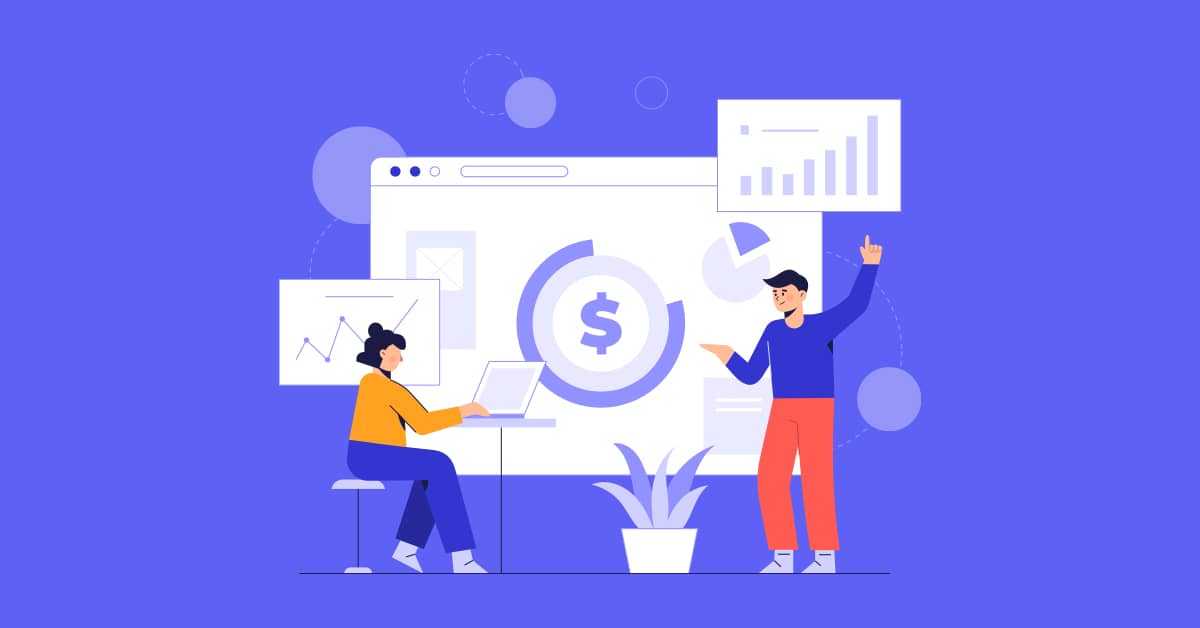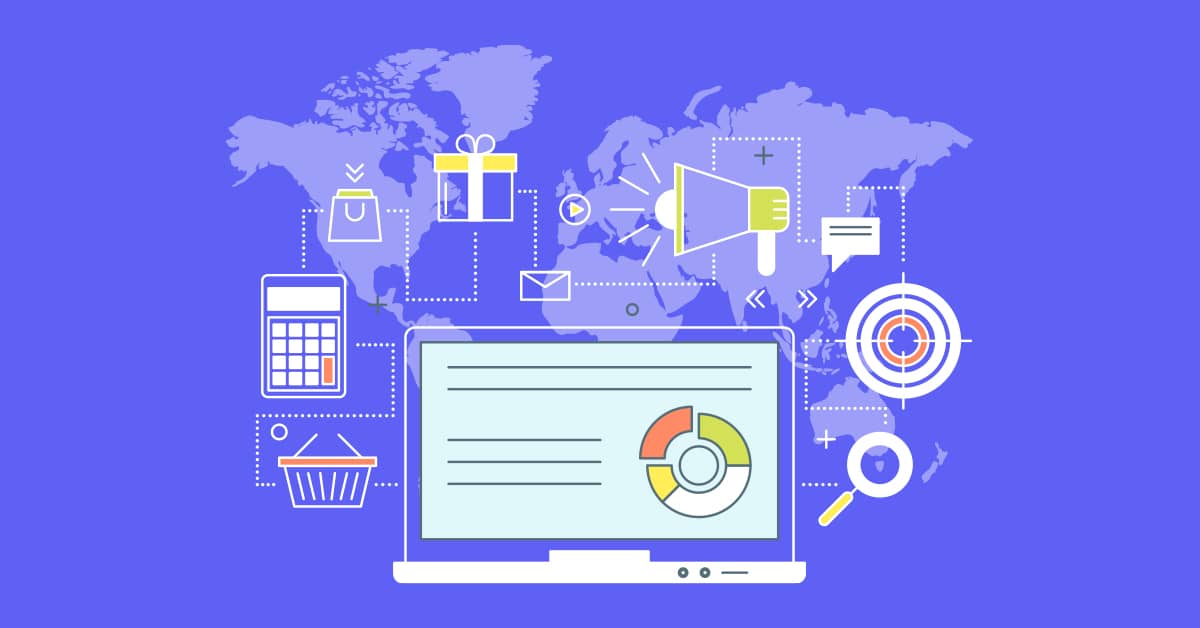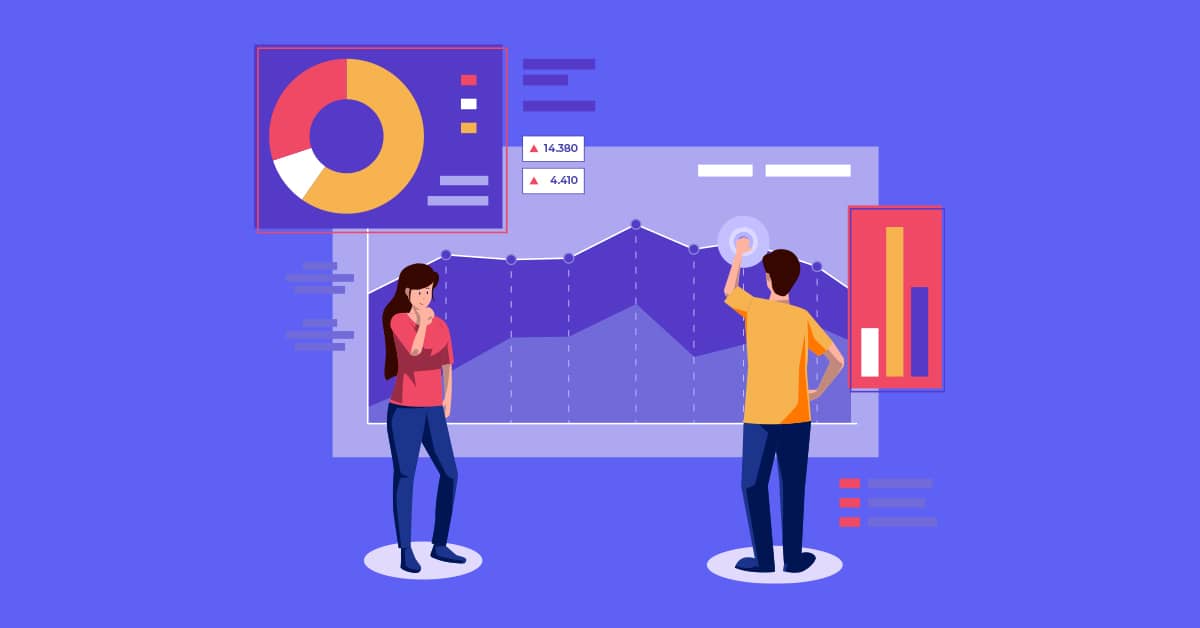
In the world of e-commerce marketplace, you can buy just about anything with a simple click, you might be curious about how those amazing prices and discounts come to be.
Well, the secret behind it all is price intelligence. It is like a superpower that online marketplaces use to their advantage. It involves gathering and analyzing data on product prices, trends, and what their competitors are up to. This helps e-commerce platforms make smart decisions and stay ahead of the ever-changing online marketplace.
Let me give you some mind-blowing stats to help you understand how important price intelligence is. According to a recent study by Statista, e-commerce sales worldwide are expected to reach a mind-boggling $6.38 trillion by 2024. That is a crazy amount of money, showing us the immense potential and intense competition in the online marketplace.
Another survey conducted by McKinsey found that 87% of consumers compare prices online before purchasing. That indicates that competitive pricing is crucial for attracting and keeping customers.
In this blog, we will dive deeper into price intelligence, explore its different aspects, and see how it shapes the e-commerce landscape. So get ready for some fascinating insights!
Understanding eCommerce Marketplace
An e-commerce marketplace is a website or platform where sellers can set up virtual shops to sell their products and services. These platforms act as the middlemen between sellers and buyers. They provide a space where sellers can list their products, and buyers can visit, browse and make a purchase.
One of the major advantages of using an e-commerce marketplace is that you have access to a wide range of products all in one place. It would help if you did not visit multiple physical stores or websites to find what you want. Plus, you can shop from the comfort of your home and have the items delivered right to your doorstep.
On the other hand, sellers benefit from the marketplace as well. They can reach potential customers without the need for a physical store. It is like having a shop that is open 24/7 and accessible to people worldwide.
What Is Price Intelligence?

Price intelligence refers to gathering and analyzing information about the market prices of products or services. It is like being a savvy shopper on steroids! Imagine accessing all the secret deals, discounts, and pricing strategies businesses use.
Price intelligence helps businesses and consumers make more intelligent decisions by giving them insights into how products are priced and how they compare to competitors.
Have you ever wondered why the same item can have different prices at different stores or online? Well, that is where price intelligence comes into play. It digs deep into the pricing world to uncover the factors influencing how businesses set their prices. It considers production costs, market demand, competitor prices, and the economy’s whims.
For businesses, price intelligence is like having a crystal ball that reveals valuable information about their competitors’ pricing strategies. It helps them understand if they’re charging too much or too little for their products and allows them to adjust to stay competitive.
By Marketplace Pricing Monitoring, businesses can optimize their pricing to attract more customers, increase sales, and ultimately maximize their profits.
Why Does Price Intelligence Matter for Brands?
Price intelligence is crucial for brands in today’s competitive market. It helps brands make informed decisions about their pricing strategies and stay ahead of the competition. Here are the top reasons that will help you know Price Intelligence Importance for Brands:
1. Optimize Pricing
Price intelligence is essential for e-commerce brands to improve their pricing strategies. It involves collecting and analyzing data on product prices and competitor pricing. This helps brands make intelligent choices about how to price their products effectively.
Let’s take an example of a popular smartwatch sold by an e-commerce brand. With price intelligence, the brand can compare its pricing with competitors. If they find that their price is much higher, they can lower it to attract more customers.
On the flip side, if their price is lower than competitors, they may raise it to increase their profit margins. Price intelligence helps e-commerce brands understand market trends, spot gaps in pricing, and make decisions based on data. This ultimately leads to better optimization of pricing strategies.
2. Understanding Market Trends
If e-commerce brands want to stay on top of their game, they must gather and analyze data on product prices, promotions, and what their competitors are up to. It is like detective work for the online market.
These brands can spot trends and fluctuations by observing how prices change over time for similar products. This kind of info is gold because it helps them understand what’s happening in the market and make smart price choices.
They can determine if prices are generally going up or down, see if certain seasons or events affect prices, or even catch onto their competitors’ new pricing strategies. With all this knowledge, these e-commerce whizzes can tweak their prices to stay competitive and keep customers happy.
Knowing about market trends through this price intelligence stuff lets e-commerce brands stay one step ahead. They can adapt their pricing strategies like a boss, ensure their profit margins are on point, and outshine the competition in the fast-paced online world.
3. Identifying Pricing Opportunities
By checking out the prices and trends in the market, brands can figure out where the money-making possibilities lie. For instance, they can spot certain products or categories priced higher than the rest. With this knowledge, brands can offer sweet discounts, terrific promotions, or bundle deals to maximize these pricing opportunities.
When brands offer competitive prices in these areas, they can attract more customers, boost sales, and advance. Marketplace Pricing Strategy helps brands make smart choices about when and where to implement these pricing strategies, giving them the best shot at success.
4. Monitoring Competitors Strategies
Price monitoring is super helpful for brands because it lets them keep an eye on what their competitors are up to. They get all kinds of valuable info about how their rivals are pricing their products and running promotions.
Once they gather and analyze all this data, brands can understand what’s going on in the market. They can spot trends and patterns and see where there are price differences between their stuff and what their competitors are offering.
With this knowledge in hand, brands can make adjustments to their pricing strategies. For example, if they see that a competitor is always doing promo campaigns, they can determine if those promos work and decide if they should try something similar.
When brands keep tabs on their competitors’ strategies through price intelligence, it helps them stay in the game, make smart choices, and hold onto or even grow their market share.
5. Enhancing Profit Margin
Price monitoring is helpful for brands if they want to rake in more cash. It gives them the lowdown on how much stuff costs out there in the market, what their competitors are up to, and how customers are behaving.
With all this juicy data at their fingertips, brands can figure out where to charge a little extra or spot new opportunities to set the perfect prices. This way, they can ensure they’re making enough dough while keeping their customers satisfied.
Let’s say a brand notices that its product is priced way lower than similar ones from rival companies. They can bump the price to make more money without scaring away customers. It’s all about finding that sweet spot, you know?
Price intelligence also helps brands spot any pricing blunders or discrepancies that could be causing them to lose money. Armed with this info, they can patch things up and stop the cash from leaking. Using eCommerce Competitor Pricing lets brands make savvy decisions regarding pricing so that they can maximize their profits.
6. Increasing Customer Loyalty
Price intelligence is essential for brands to stay ahead and make customers happy. When brands offer competitive prices and excellent promotions that people want, it’s a win-win situation. People trust and stick with brands that consistently give them better deals than the competition.
When customers see that a brand has fair and affordable prices, they’re more likely to return for more. Price intelligence also helps brands determine where to improve their pricing and find cool opportunities to offer discounts, bundle deals, or limited-time promotions that customers love.
When brands understand what’s happening in the market and offer competitive pricing, they can build great customer relationships. This leads to loyalty and repeats business, which every brand wants. So price intelligence is pretty rad for brands that want to succeed!
Case Studies: Successful Implementation of Price Intelligence

Case Study1: Walmart
Walmart is a multinational retail corporation that operates a chain of hypermarkets, discount department stores, and grocery stores. It wanted to enhance its pricing strategy by leveraging price intelligence to optimize its product pricing across its vast range of products. The company aimed to improve profitability while remaining competitive in the market.
With the help of price intelligence, they could analyze historical data and monitor market fluctuations. This helped them anticipate price changes and adjust their pricing strategies accordingly. Moreover, this approach helped them optimize their real-time pricing and capture increased sales and revenue opportunities.
Using price intelligence, the company implemented dynamic pricing algorithms that automatically adjusted their prices based on demand, competitor pricing, and inventory levels. This allowed them to optimize their prices in real-time, ensuring they always offered their customers the best possible value while maintaining profitability.
Img Ref
Case Study 2: Amazon
Amazon is one of the largest marketplaces where you can buy almost anything. But when it was starting, it faced a lot of challenges. One of the significant challenges was figuring out how to set prices to keep them competitive with other online stores. With so many products and sellers, Amazon needed a way to gather and analyze pricing information from different sources to ensure they were offering their customers the best prices.
To deal with this pricing challenge, Amazon used a marketplace competitor monitoring tool. This tool monitored product prices on other online stores, competitor websites, and even physical stores. It extracted a lot of data and looked for patterns in pricing, what competitors were doing, and what customers were looking for.
Using this price intelligence system had a lot of benefits for Amazon. First, it allowed them to adjust their prices in real time based on what was happening in the market, what their competitors were charging, and what customers wanted. This ensured that Amazon stayed competitive and appealed to customers looking for the best deals.
Best Practices for Implementing Price Intelligence

Here are some best practices for implementing price intelligence:
1. Define Your Objectives
First, determine your goals and what you hope to achieve with marketplace price monitoring. Are you looking to make pricing more profitable or gain an edge over your competitor? Knowing your objective will help you concentrate on the right marketplace pricing strategy and tools.
2. Gather Comprehensive Data
It is essential to gather the right data for helpful price information. Ensure you get data from different places, like your competitor’s prices, how prices have changed over time, what customers like, and how much people want certain things. The more data you have, the better you can understand things and make smart pricing decisions.
3. Utilize Technology Tools
Use smart tools made for price intelligence. These tools collect, analyze, and monitor data for you so that you can spend less time and effort. Look for tools that give you up-to-date information, show data in an easy-to-understand way, and let you keep an eye on your competitor’s prices. Advanced algorithms and machine learning can also help identify pricing patterns and opportunities.
4. Analyze And Interpret Data
After collecting the data, look closely at it to find important information. Pay attention to how prices change over time, seasonal patterns, and your competitor’s strategies. Find any gaps in pricing and opportunities to adjust your prices accordingly. Focus on internal factors like costs and margins and external factors like market dynamics and customer behavior.
5. Continuously Monitor And Adapt
Price intelligence is an ongoing process. It means checking your prices and watching what other companies are charging. By doing this, you can make sure you stay competitive. Pay attention to what your competitors are doing with their prices, listen to what your customers say, and stay updated on what’s happening in your industry. Be open to changing your pricing strategies based on what you learn from analyzing price intelligence.
Conclusion
In conclusion, price intelligence is vital for the success of an e-commerce marketplace. By closely monitoring competitor prices, market trends, and customer behavior, you can make smart pricing decisions that boost profits and keep you ahead of the competition.
But it will only be possible with the help of a Leading Price Intelligence Service Provider. They have the right tools and expertise that help you achieve your pricing goals and stay competitive in the ever-evolving digital landscape. With their valuable insights and actionable data, you can make informed pricing decisions for your e-commerce business.
